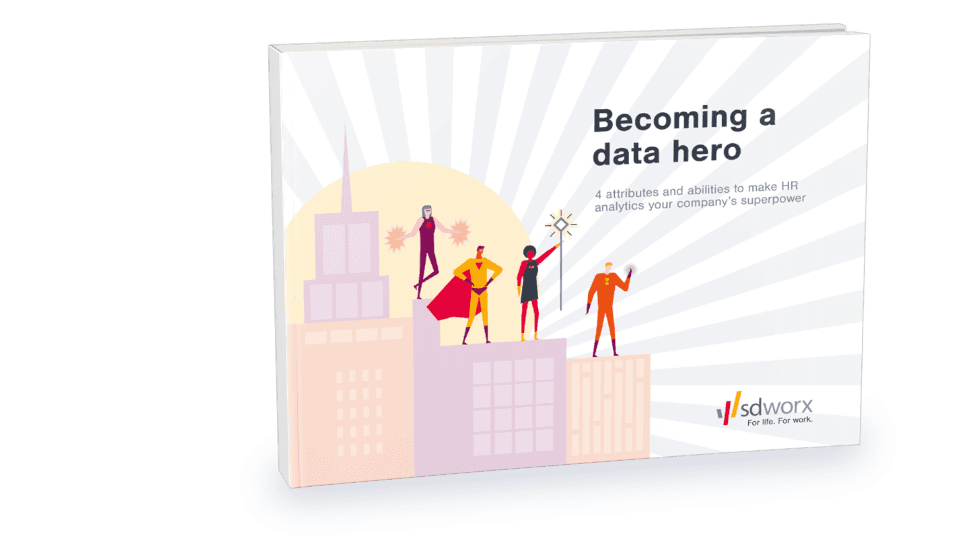How SD Worx can help
SD Worx is able to consolidate data such as payroll and employee data, time registration, absences and other data from many sources and make it all available in an intuitive way.

The amount of HR data collected by your organisation from various sources is immense. To keep from drowning in this sea of data, you need a game plan to manage, store, validate and consolidate your data in a correct and effective way.
The bigger and more internationally active your organisation, the higher the need for a centralized approach when setting up your HR data infrastructure. Take, for instance, a company that needs to aggregate data sources from different territories to create country reports. Working in the cloud is a must to pull this off in a cost- and time-effective way.
Here, data integration tools and data warehouses can play a key role. Through a process of extracting, transforming and loading, data integration tools move data from their initial source systems into your data warehouse, where the data is then consolidated, stored and analysed.
You can choose to build the necessary data tools and warehouses yourself. However, this requires extensive data science and data architecture skills. If your company lacks this expertise, outsourcing this task can provide a solution. Or you can opt for external applications and platforms. The tools vary greatly from one company to another depending on their goals and data maturity:
Data validation is a crucial part of any data handling task. This means ensuring that your data is up to par, correct and useful. In practice, this often boils down to “having a person at the controls”: someone who’s not just datasavvy, but also understands how your organisation works and what its goals are. This is necessary to make sure that the data you collect truly serves its purpose. Take, for instance, your turnover rate: if this figure suddenly seems to skyrocket, this may be due to internal mobility data being included in the calculation. Without proper validation and human intervention, these analytics would be interpreted incorrectly.
As you collect, manage and store larger amounts of personal data from your employees, data security and privacy regulations – such as GDPR in the EU – will directly affect how you handle your HR and people analytics. Even a simple Excel file with contact information is considered personal data and subject to GDPR compliance. It’s therefore essential to have HR partner up with the right roles or departments across your organisation (such as IT and legal) to carefully review all the HR data.
Using HR data and analytics in an ethical way should be a priority in data management from the get-go. This means sitting down and reflecting on how and if data collection and analysis truly serves the people in your organisation. Put bluntly: if you can’t describe the benefits to the people from which you’re collecting the data, then you shouldn’tbe collecting it.
Also, provide guidance – to managers, for instance – on how to interpret HR and people data in an ethical way. HR analytics is mainly based on statistical techniques. That makes it a very powerful tool to help you make decisions about your workforce as a whole or specific employee groups. But it is less useful for decisions about individual employees or job candidates. For example, your data could indicate that employees with a certain background tend to be more productive. But using this insight to choose between two individual candidates doesn’t necessarily lead to the best decision overall.


SD Worx is able to consolidate data such as payroll and employee data, time registration, absences and other data from many sources and make it all available in an intuitive way.
Discover 4 skills to master to unlock the full power of your HR data and analytics.
